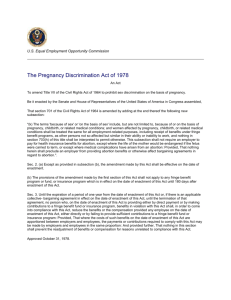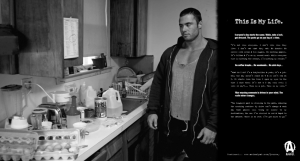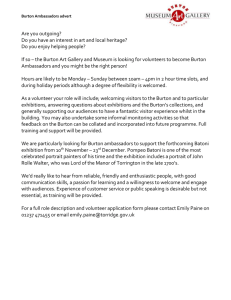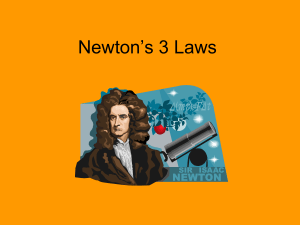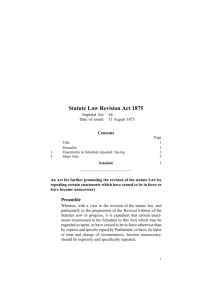Role Play Handout - Andrews University
advertisement
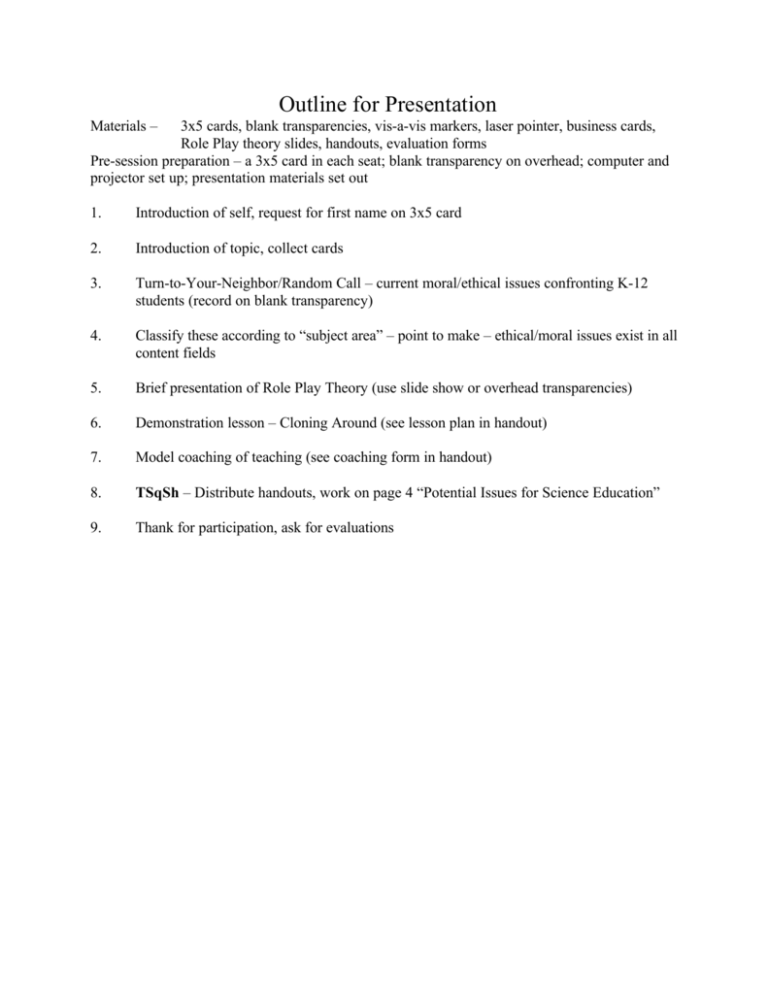
Outline for Presentation Materials – 3x5 cards, blank transparencies, vis-a-vis markers, laser pointer, business cards, Role Play theory slides, handouts, evaluation forms Pre-session preparation – a 3x5 card in each seat; blank transparency on overhead; computer and projector set up; presentation materials set out 1. Introduction of self, request for first name on 3x5 card 2. Introduction of topic, collect cards 3. Turn-to-Your-Neighbor/Random Call – current moral/ethical issues confronting K-12 students (record on blank transparency) 4. Classify these according to “subject area” – point to make – ethical/moral issues exist in all content fields 5. Brief presentation of Role Play Theory (use slide show or overhead transparencies) 6. Demonstration lesson – Cloning Around (see lesson plan in handout) 7. Model coaching of teaching (see coaching form in handout) 8. TSqSh – Distribute handouts, work on page 4 “Potential Issues for Science Education” 9. Thank for participation, ask for evaluations Hitting the Issues Head-on in Science Education: Role Play Comes to Science Class Larry D. Burton, Ph.D. Andrews University Presenter Berrien County m&m Day October 20, 1998 The Basics of Role Play Theory Purposes of the Strategy Fannie and George Schaftel (1967) describe role play as a type of “reality practice.” Teachers using role play as an instructional tool can expect to foster empathy, interpersonal problem-solving techniques, and reflective analysis of personal values and behavior (Joyce, Weil, & Showers, 1992). The benefits of role play can be expanded as follows: 1. 2. 3. 4. 5. 6. 7. 8. 9. The ability to practice a potentially difficult situation in a safe environment. The ability to try a variety of approaches in difficult situations. The opportunity to experience situations from another perspective. The opportunity to identify personal values. The opportunity to listen to another persons point of view. A safe environment for practicing problem solving. A laboratory for analyzing interactions and values. The opportunity to learn from our mistakes. The chance to explore the consequences of choices made. The Shaftels identify the following as perhaps the greatest benefit of using the role play teaching strategy. Students “with the help and opposition of their classmates, gradually face and make conscious the choices they make in situations crucial to them, and, through the experience of articulating, testing, and criticizing their motivations, develop a system of consciously held values” (Shaftel & Shaftel, 1967, p. 84). Establishing a Classroom Climate for Role Play Role play will never achieve its potential in a classroom that is not “safe.” The classroom environment must promote openness of thought and interaction. The climate must promote the following: 1. 2. 3. 4. The expression of both traditional and alternative behaviors. The expression of strong feelings. Respect for the feelings of others. Respect for the ideas of others. “Hitting the Issues Head-on” 3 © 1998, Larry D. Burton 5. 6. 7. Respect for the feelings of others. The exploration of alternative solutions to problems. Non-evaluative acceptance of student responses. “Reality” serves as the basis for evaluation of the enactments. To truly have this type of classroom, the behavior must be modeled and taught (using T-Charts for example) by the classroom teacher. Guidelines for Interaction in Role Play C Be non-evaluative in your reaction to student responses. C Be supportive of students and their responses C Listen for “hidden” messages in student responses C The teacher is a “directive guide-on-the-side” during role play. The teacher is not totally non-directive, yet neither is she controlling the process. C “Evaluate” the enactments and discussions on the reality of the situation. C Encourage alternative solutions and re-enactments. C Encourage alternative interpretations of roles. C Paraphrase and reflect student responses to increase personal awareness of views, feelings, and values expressed. Preparation Necessary for Teaching with Role Play Since role play is an active, experiential strategy the only materials needed to use the strategy are those required to confront the learners with the initial problem. The problem can be presented in a variety of ways including stories, videos, scenarios, case studies, and moral dilemmas. Joyce, Weil, and Showers (1992) identify the following sources of problem situations for role play: 1. 2. 3. 4. 5. 6. 7. 8. Issues arising from developmental stages Issues arising from sexual, ethnic, or socioeconomic class Value (ethical) themes Difficult emotions Scripts or “games people play” Troublesome situations Social issues Community issues To this list I add the following (some of which are implied in #3 & #7 above): 9. Ethical issues from specific content areas 10. Ethical issues from specific professions 11. Issues arising from cross-cultural interaction 12. Ethical issues arising from technological advancement Possible Foci of a Role Playing Session (Joyce, Weil, & Showers, 1992) 1. Feelings “Hitting the Issues Head-on” 4 © 1998, Larry D. Burton a. b. c. d. 2. 3. 4. Exploring one’s own feelings Exploring others’ feelings Acting out or releasing feelings Experiencing higher-status roles in order to change the perceptions of others and one’s own perceptions Attitudes, values, and perceptions a. Identifying values of culture or subculture b. Clarifying and evaluating one’s own values and value conflicts Problem-solving attitudes and skills a. Openness to possible solutions b. Ability to identify a problem c. Ability to generate alternative solutions d. Ability to evaluate the consequences to oneself and others of alternative solutions to problems e. Experiencing consequences and making final decisions in light of those consequences. f. Analyzing criteria and assumptions behind alternatives g. Acquiring new behaviors Subject matter a. Feelings of participants b. Historical realities: historical crises, dilemmas, and decisions Joyce, B., Weil, M., & Showers, B. (1992). Models of Teaching. Boston, Allyn and Bacon. Shaftel, F., and Shaftel, G. (1967). Role Playing for Social Values. Out of print. “Hitting the Issues Head-on” 5 © 1998, Larry D. Burton Potential Issues for Role Plays in Science Education < < < < < < < Euthanasia Use of human tissue in research Attitudes toward science and science education Workplace ethics Possible scenario foci for issue areas: < < < Euthanasia < < < < Jack Kvorkian’s latest assisted suicide Use of human tissue in research < < < < < Use of fetal brain tissue in Alzheimer’s treatment Cloning Attitudes toward science and science education < < < Students who hate science Parents who don’t see science as valuable for their children A teacher who believes her/his students can not learn science concepts/processes < < < < Workplace ethics < < < < Harrassment Treatment of patients (with insurance coverage) who are no longer benefitting from treatment Refusal to treat patients who do not have insurance coverage “Hitting the Issues Head-on” 6 © 1998, Larry D. Burton Role Play Planning Form Subject/Topic/Grade-Age Level/Time Required/# of Students Lesson Goals 1. 2. 3. Performance Objectives 1. 2. 3. 4. State the problem to be presented or how the problem will be constructed. If students are unfamiliar with the role play process, do you need to instruct them on specific process elements to ensure their success? 1. Phase 1: Warm Up the Group How will you present the problem? Describe examples provided to the students. Write one or two questions that could be used to explore the issues involved in the problem situation. 2. Phase 2: Select Participants Suggest several roles that could be enacted for this problem situation. What would be the attitudes/values for each role? How will you select the participants. 3. Phase 3: Set the Stage Describe possible settings for the first enactment. What areas can you expect to be included in the enactment? “Hitting the Issues Head-on” 7 © 1998, Larry D. Burton Role Play Planning Form (continued) 4. Phase 4: Prepare the Observers What tasks will you assign the observers? For example, Describe: feelings of a specific player thinking process of a specific player actions/reactions of a specific player Analyze: possible reasons for players' actions possible goals for each player Propose: alternative enactments (and then demonstrate in a reenactment) Evaluate: realism of the enactment effectiveness of players' actions sequence of players' actions helpfulness of players' actions in achieving goals 5. Phase 5: Enact/Phase 7: Reenactment Suggest two or three possible scenes for enactment/reenactment. Are there certain values you want to highlight in the first enactment? 6. Phases 6 & 8: Discuss and Evaluate Write two or three questions that could be used to initiate student analysis of the conflict and values exhibited. What cooperative techniques will you use to facilitate discussion? 7. Phase 9: Share Experience and Generalize Write a question to encourage application of the problem solution to a specific real life situation. Write a question designed to apply the findings to life in general. “Hitting the Issues Head-on” 8 © 1998, Larry D. Burton 10. 11. 12. Copy this page on card stock. Cut along solid lines. Use these instructions as hand-held “cheat sheets” as you teach role play lessons. Role Play Step-by-Step Role Play Step-by-Step Phase 1: Warm Up the Group Identify/introduce the problem Make problem explicit Phase 2: Select Participants Analyze roles Select players Phase 3: Set the stage Decide on the setting Restate roles Phase 4: Prepare the Observers Decide focus Assign tasks Phase 5: Enact Begin role play (keep it short) Break the role play Phase 6: Discuss and Evaluate Review action of the role play Discuss major focus Develop next enactment Phase 7: Reenact Play revised roles Suggest next steps Phase 8: Discuss and Evaluate Same as phase six Phase 9: Share Experience and Generalize Relate problem situation to real experience Generalize principals of behavior Phase 1: Warm Up the Group Identify/introduce the problem Make problem explicit Phase 2: Select Participants Analyze roles Select players Phase 3: Set the stage Decide on the setting Restate roles Phase 4: Prepare the Observers Decide focus Assign tasks Phase 5: Enact Begin role play (keep it short) Break the role play Phase 6: Discuss and Evaluate Review action of the role play Discuss major focus Develop next enactment Phase 7: Reenact Play revised roles Suggest next steps Phase 8: Discuss and Evaluate Same as phase six Phase 9: Share Experience and Generalize Relate problem situation to real experience Generalize principals of behavior “Hitting the Issues Head-on” 9 © 1998, Larry D. Burton Cloning Around A Role Play Lesson Subject Area Science Topic Cloning Instructional Level 4th grade through adult Time Required 40 -- 55 minutes Size of Instructional Group At least 6 -- 10 students Performance Objectives Demonstrate problem solving techniques Identify and analyze personal values Identify values held by others Evaluate reasons for behavioral actions Phase 1: Warm up the group: < < < Present the problem by reading the scenario. < Robert and Samantha Jones have been trying to have a child for 10 years. All treatments, including in-vitro fertilization have failed. A family friend suggested that the Jones try cloning as an alternative to traditional reproduction. The Jones could produce children using Samantha’s egg and the nucleus of any cell from either “parent.” Samantha and Robert are not quite sure what to do. < Display a synopsis of the scenario on overhead. Review the Role Play process (overhead) Questions to use: < How would you describe the basic problem in this situation? < What issues are involved? < Are there possible sources of conflict in this situation? Phase 2: Select Participants < < < Who should we include in the first enactment? Possible roles: < Robert Jones < Samantha Jones < Their medical doctor < The family friend < A counselor Select participants through volunteers -- look for someone who reacts to the scenario Phase 3: Set the Stage < Where should the enactment begin? “Hitting the Issues Head-on” 10 © 1998, Larry D. Burton < Possible settings for the first enactment < At the Jones’ home < At the home of their family friend < At their doctor’s office Phase 4: Prepare the Observers Tasks for the observers (Place on an overhead) < Analysis 1. Are there other issues that are influencing the dynamics of this situation? 2. What are the players trying to achieve (what are the goals behind their actions)? < Evaluate 3. How realistic is the enactment? 4. Are the players actions effective in achieving their goals (as identified by #2)? < Propose 5. How could we re-enact this scene? 6. Where should we go next in our enactments? Phase 5: Enactment < < Possible scenes for enactment/reenactment < The family friend suggests the possibility of cloning < The couple discuss the friend’s suggestion alone < The couple discuss the friend’s suggestion with their doctor Possible sources for disagreement < Religious background of one player < Personal ethical position on “experimenting” with humans < The effect on the child (rights of the unborn, will “being a clone” impact the child’s development, etc.) Phase 6: Discuss & Evaluate < < < < < Observers report < Group discusses observations What issues are evident in the enactment thus far? What is the source of conflict? If there one clear-cut issue at the center of the enactment? What problem-solving or conflict-resolution skills have been demonstrated so far? Phase 7: Reenactment < Use same process as Phase 5 Phase 8: Discuss & Evaluate < Use same process as Phase 6 Phase 9: Share Experience & Generalize < < Use Think/Square/Share to process the following questions. Questions to encourage application of learnings to specific real world situations: “Hitting the Issues Head-on” 11 © 1998, Larry D. Burton < < < In looking at the issues we identified in this role play, can you think of any other life situations which involve the same issues? What problem-solving techniques or conflict-resolution skills were demonstrated in the enactments? In what other situations could you use these same techniques/skills? “Hitting the Issues Head-on” 12 © 1998, Larry D. Burton Robert and Samantha Jones have been trying to have a child for 10 years. All treatments, including in-vitro fertilization have failed. A family friend suggested that the Jones try cloning as an alternative to traditional reproduction. The Jones could produce children using Samantha’s egg and the nucleus of any cell from either “parent.” Samantha and Robert are not quite sure what to do. “Hitting the Issues Head-on” 13 © 1998, Larry D. Burton Observer Roles Analysis 1. Are there other issues that are influencing the dynamics of this situation? 2. What are the players trying to achieve (what are the goals behind their actions)? Evaluate 3. How realistic is the enactment? 4. Are the players actions effective in achieving their goals (as identified by #2)? Propose 5. How could we re-enact this scene? 6. Where should we go next in our enactments? Cloning Around II “Hitting the Issues Head-on” 14 © 1998, Larry D. Burton A Role Play Lesson Subject Area Science Topic Cloning Instructional Level 4th grade through adult Time Required 40 -- 55 minutes Size of Instructional Group At least 6 -- 10 students Performance Objectives Demonstrate problem solving techniques Identigy and analyze personal values Identify values held by others Evaluate reasons for behavioral actions Phase 1: Warm up the group: < Present the problem by reading the scenario. < < < Anna Wright is one of the world’s most brilliant scientists. Because of her work in at the Centers for Disease Control, the quality of life for HIV patients has greatly improved in the past five years. Recently she was approached by a childless couple who would like to use the latest technology in their pursuit of parenthood. They have attempted all traditional fertility treatments and some not-so-traditional treatments. After hearing several news reports, they would like to attempt cloning. They would like Dr. Wright to supply the nucleus for the cloning procedure that will produce their child. < Display a synopsis of the scenario on overhead. Review the Role Play process (overhead) Questions to use: < How would you describe the basic problem in this situation? < What issues are involved? < What possible conflicts or conundrums could emerge from this situation? Phase 2: Select Participants < < Who should we include in the first enactment? Possible roles: < Anna Wright < Robert Jones (the husband) < Samantha Jones (the wife) < Their medical doctors < Dr. Wright’s colleagues < A counselor “Hitting the Issues Head-on” 15 © 1998, Larry D. Burton < Select participants through volunteers -- look for someone who reacts to the scenario Phase 3: Set the Stage < < Where should the enactment begin? Possible settings for the first enactment < At Dr. Wright’s office < At the Jones’ home < At a restaurant Phase 4: Prepare the Observers Tasks for the observers (Place on an overhead) < Analysis 1. Are there other issues that are influencing the dynamics of this situation? 2. What are the players trying to achieve (what are the goals behind their actions)? < Evaluate 3. How realistic is the enactment? 4. Are the players actions effective in achieving their goals (as identified by #2)? < Propose 5. How could we re-enact this scene? 6. Where should we go next in our enactments? Phase 5: Enactment < < Possible scenes for enactment/reenactment < The Jones recognize Dr. Wright at a restaurant and approach her < The couple discuss their proposal with Dr. Wright at her office < The couple discuss their proposal with Dr. Wright in their doctor’s office Possible sources for disagreement < Religious background of one player < Personal ethical position on “experimenting” with humans < The effect on the child (rights of the unborn, will “being a clone” impact the child’s development, etc.) < Dr. Wright’s desire or lack of desire for “immortality” < Beliefs about what it means to be a human or an individual Phase 6: Discuss & Evaluate < < < < < Observers report < Group discusses observations What issues are evident in the enactment thus far? What is the source of conflict? If there one clear-cut issue at the center of the enactment? What problem-solving or conflict-resolution skills have been demonstrated so far? Phase 7: Reenactment < Use same process as Phase 5 Phase 8: Discuss & Evaluate “Hitting the Issues Head-on” 16 © 1998, Larry D. Burton < Use same process as Phase 6 Phase 9: Share Experience & Generalize < < Use Think/Square/Share to process the following questions. Questions to encourage application of learnings to specific real world situations: < In looking at the issues we identified in this role play, can you think of any other life situations which involve the same issues? < What problem-solving techniques or conflict-resolution skills were demonstrated in the enactments? < In what other situations could you use these same techniques/skills? “Hitting the Issues Head-on” 17 © 1998, Larry D. Burton Anna Wright is one of the world’s most brilliant scientists. Because of her work at the Centers for Disease Control, the quality of life for HIV patients has greatly improved in the past five years. Recently she was approached by a childless couple who would like to use the latest technology in their pursuit of parenthood. They have attempted all traditional fertility treatments and some not-so-traditional treatments. After hearing several news reports, they would like to attempt cloning. They would like Dr. Wright to supply the nucleus for the cloning procedure that will produce their child. “Hitting the Issues Head-on” 18 © 1998, Larry D. Burton Observer Roles Analysis 1. Are there other issues that are influencing the dynamics of this situation? 2. What are the players trying to achieve (what are the goals behind their actions)? Evaluate 3. How realistic is the enactment? 4. Are the players actions effective in achieving their goals (as identified by #2)? Propose 5. How could we re-enact this scene? 6. Where should we go next in our enactments? “Hitting the Issues Head-on” 19 © 1998, Larry D. Burton Role Play Coaching Form 1. Phase 1: Warm Up the Group Describe the presentation of the problem. Describe examples provided to the students. 2. Phase 2: Select Participants Describe the selection of the participants. How did you describe the characters? 3. Phase 3: Set the Stage How did you describe the setting for the first enactment? 4. Phase 4: Prepare the Observers Describe the preparation of the observers. “Hitting the Issues Head-on” 20 © 1998, Larry D. Burton Role Play Coaching Form (continued) 5. Phase 5: Enact/Phase 7: Reenactment Describe the enactment/reenactment(s). 6. Phases 6 & 8: Discuss and Evaluate Describe the discussion/evaluation of the enactment/reenactment(s). 7. Phase 9: Share Experience and Generalize Describe how you related the problem situation to real experience and current problems. 8. What do you think went well? 9. What do you think could be improved, and how would you improve it? “Hitting the Issues Head-on” 21 © 1998, Larry D. Burton
